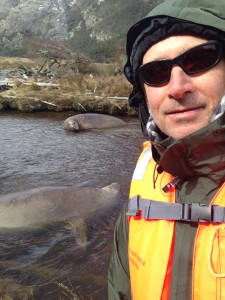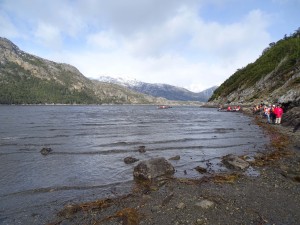Karukinka: Paradise at the end of the World
January 21, 2015 - 4 minutes readI recently sailed on the new Via Australis Wild Patagonia, a three-night roundtrip cruise from Punta Arenas to Tierra del Fuego. This area of the world continues to astound me with its grandeur and remoteness. Our new itinerary really does highlight the best of this incredibly untouched secluded region at the tip of South America. But the highlight of the new cruise, at least for me, was a chance to visit the spectacular Karukinka Reserve.
Perched on Admiralty Sound on the Chilean side of the island, the park sprawls across 1,160 square miles of sub-Antarctic woodlands, grasslands, peat marshes and snowcapped mountains. Karukinka is home to many of Patagonia’s iconic animals including condors, guanaco, the rare culpeo fox and the giant Magellanic woodpecker. It’s also boasts plenty of weird and wonderful plant species from the Chilean fire bush and white dog orchid to a carnivorous plant that feasts on insects.
Karukinka is owned and managed by a nonprofit group — the Wildlife Conservation Society (WCS) — and visitation is strictly limited. But on October 1, we received permission from WCS to add Karukinka as a shore excursion on the new three-night itinerary and we were lucky enough to be the inaugural group to make the landing.
The territory that forms Karukina — which means “our land” in the language Selk’nam people who originally inhabited this area — was donated by investment bank Goldman Sachs in 2004 and remains one of the largest donations ever made for conservation.
Australis is partnering with WCS to create a sustainable tourism model for the reserve. That makes sense because we’re the only company bringing people to this area on a regular basis. In addition, our guides work closely with researchers from the University of Magallanes in Punta Arenas to monitor environmental conditions in the reserve (along with all of our other stops on this cruise).
Our shore excursion at Karukinka started with a Zodiac landing on a rocky beach near the end of Admiralty Sound. Then it was off on foot along the shore and up a tidal stream where we saw elephant seals basking on the banks. Further along we trekked through a forested area to a lovely waterfall. We didn’t see any guanco — a short-haired relative of the llama — during our stop. But we did come across their tracks and dung. One of the biggest surprises was the sight of half a dozen Andean Condors soaring high above us.
It was some rough hiking, as the trails in the reserve haven’t been fully developed yet. But frankly it didn’t matter because I felt very privileged to experience a part of our planet that very few people have ever set foot on. As we moved through the landscape, I found myself wondering if anyone had ever been to some of the spots we visited in the reserve. That’s how special it is to land at Karukinka.
Tags: Australis, cruises to Patagonia, elephant seals, Tierra del Fuego
